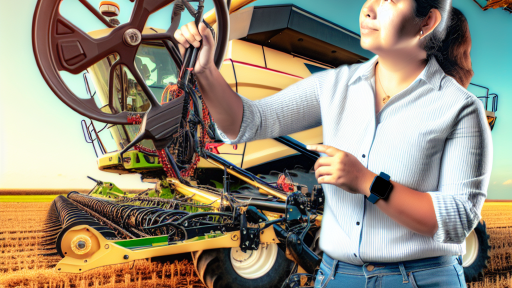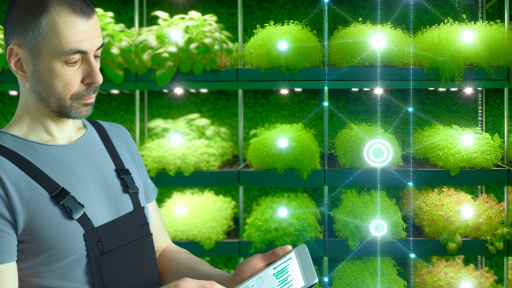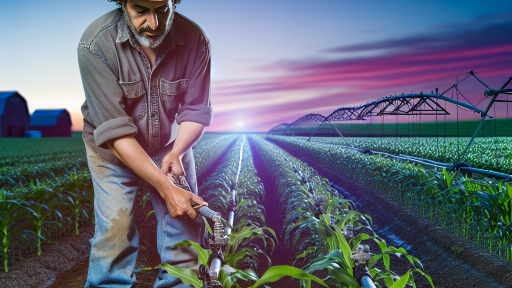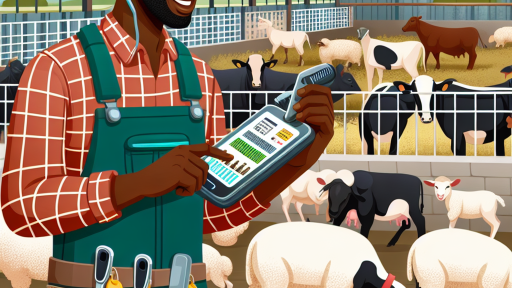Introduction to GPS Technology in Agriculture
GPS technology revolutionizes modern agriculture.
It enhances both efficiency and productivity in farming.
This technology allows farmers to make informed decisions.
Farmers can monitor their fields with pinpoint accuracy.
Additionally, GPS aids in resource management.
Fluctuating weather conditions require precise interventions.
Moreover, accurate data collection supports sustainable practices.
Understanding GPS Basics
GPS stands for Global Positioning System.
This satellite-based navigation system tracks locations globally.
It employs a network of satellites orbiting the Earth.
GPS receivers communicate with these satellites for data.
Applications in Precision Farming
Farmers utilize GPS for various applications.
- Seeding and planting precision
- Field mapping and surveying
- Yield monitoring and analysis
By employing GPS-guided equipment, farmers improve accuracy.
This reduces waste and enhances productivity significantly.
Benefits of GPS Technology
Using GPS technology offers numerous benefits.
Transform Your Agribusiness
Unlock your farm's potential with expert advice tailored to your needs. Get actionable steps that drive real results.
Get Started- Increased operational efficiency
- Reduced input costs
- Enhanced crop yield and quality
Moreover, it facilitates better irrigation management.
Farmers can optimize water usage based on field needs.
Challenges in Implementation
Despite its advantages, challenges exist.
Initial investment costs can be significant.
Additionally, technical knowledge is essential for farmers.
Some regions may lack adequate satellite coverage.
Future of GPS in Agriculture
The future of GPS technology is promising.
Advancements will bring more precise tools to the market.
Integration with IoT devices will enhance data collection.
Farmers will continue to lead the way in innovation.
Benefits of Precision Farming with GPS Technology
Improved Resource Management
GPS technology enhances resource management in agriculture.
Farmers can optimize irrigation based on precise data.
This leads to reduced water usage and costs.
Additionally, GPS helps in effective fertilizer application.
Farmers can target specific areas needing nutrients.
Consequently, crop yields increase while minimizing waste.
Increased Crop Yield
Precision farming directly contributes to higher crop yields.
By utilizing GPS data, farmers can analyze plant health.
This enables timely interventions, such as pest control.
Furthermore, GPS allows for better seed placement and spacing.
As a result, crops benefit from optimized growing conditions.
Cost Efficiency
Implementing GPS technology reduces operational costs significantly.
Farmers save money on inputs like seeds and pesticides.
Efficient field coverage minimizes overlap during operations.
Showcase Your Farming Business
Publish your professional farming services profile on our blog for a one-time fee of $200 and reach a dedicated audience of farmers and agribusiness owners.
Publish Your ProfileThis translates into both time and financial savings.
Moreover, accurate data leads to better financial planning.
Environmental Sustainability
GPS technology supports sustainable farming practices.
It reduces chemical runoff through precise application methods.
This approach helps protect local ecosystems and biodiversity.
Additionally, efficient resource use minimizes environmental impact.
Farmers genuinely contribute to increased soil health.
Data-Driven Decision Making
GPS enables farmers to make informed decisions based on data.
Data analysis leads to improved planting strategies.
Farmers can assess field variability in real-time.
Consequently, they adapt practices to specific conditions.
This adaptability enhances overall farm productivity.
Types of GPS Technology Used in Precision Farming
GPS Guidance Systems
GPS guidance systems assist farmers in precise navigation across fields.
These systems help reduce overlap during planting and spraying.
Farmers use autopilot features to streamline their operations.
For instance, automated steering systems enhance efficiency.
Real-Time Kinematic (RTK) GPS
RTK GPS offers centimeter-level accuracy for farming tasks.
This technology relies on a network of fixed base stations.
It provides precise location data via satellite communications.
Farmers often use RTK GPS for tasks like planting and fertilizing.
Wide Area Augmentation System (WAAS)
WAAS enhances GPS accuracy by correcting satellite signals.
This system is particularly beneficial for large farming areas.
Farmers appreciate its ability to improve positional accuracy significantly.
Moreover, WAAS helps optimize field management and crop yields.
Global Navigation Satellite System (GNSS)
GNSS incorporates multiple satellite systems for improved accuracy.
This technology allows farmers to use various satellite signals.
Consequently, it provides flexibility in location tracking around the world.
Farmers can achieve better coverage in areas with poor satellite visibility.
Precision Agriculture Apps
Various apps utilize GPS technology for farm management.
These applications provide crucial data for decision-making.
Farmers can monitor crop health and soil conditions effectively.
Furthermore, such apps enhance the overall efficiency of farming operations.
Discover More: Benefits of Smart Irrigation for Modern Farmers
Challenges and Limitations of GPS Implementation in Agriculture
High Costs of Technology
Implementing GPS technology often requires significant upfront investment.
This investment includes purchasing GPS equipment and software.
Farmers may also need to budget for ongoing maintenance and updates.
Technical Knowledge and Training
Farmers need specific technical skills to effectively utilize GPS systems.
Training programs can be time-consuming and costly.
Additionally, there may be a shortage of knowledgeable technicians in rural areas.
Signal Interference and Accuracy Issues
GPS signals may experience interference from various sources.
Showcase Your Farming Business
Publish your professional farming services profile on our blog for a one-time fee of $200 and reach a dedicated audience of farmers and agribusiness owners.
Publish Your ProfileNatural obstacles like trees and hills can disrupt signals significantly.
This interference can lead to inaccuracies in location data.
Such inaccuracies can affect precision farming decisions.
Dependence on Technology
Farmers become heavily reliant on technology for daily operations.
System failures can halt crucial farming processes unexpectedly.
Moreover, a lack of backup plans can exacerbate these issues.
Data Management Challenges
GPS technology generates large amounts of data.
Managing and interpreting this data can be overwhelming for farmers.
Poor data integration can lead to misguided strategies and decisions.
Environmental Constraints
Geographical features impact GPS accuracy in specific areas.
For instance, dense forests or urban environments pose unique challenges.
These constraints limit the effectiveness of precision agriculture methods.
See Related Content: Essential Precision Farming Tools for Modern Farmers
Step-by-Step Guide to Implementing GPS Technology on Farms
Understanding GPS Technology
GPS technology enhances precision farming significantly.
It allows farmers to determine the exact location of equipment and crops.
This technology improves the efficiency of farming operations.
Assessing Farm Needs
Begin by evaluating your current farming practices.
Identify areas where GPS technology could boost productivity.
Consider factors such as field size, crop types, and equipment.
Choosing the Right GPS Equipment
Select GPS devices that suit your specific requirements.
Evaluate options such as handheld devices, auto-steering systems, and monitoring software.
Research brands like Trimble, John Deere, and Ag Leader for quality options.
Training Staff on GPS Operation
Organize training sessions for your team on GPS usage.
Ensure they understand how to operate the equipment effectively.
Provide hands-on training to enhance their confidence and skills.
Integrating GPS with Farm Management Software
Link GPS technology with your existing farm management software.
This integration streamlines data collection and analysis.
Look for software that complements your GPS hardware.
Testing and Adjusting GPS Functionality
After installation, conduct trials to ensure everything works well.
Monitor the accuracy of GPS data during farming activities.
Make necessary adjustments for optimal performance.
Maintaining GPS Equipment
Regular maintenance is crucial for GPS devices.
Schedule periodic checks to ensure proper functioning.
Replace or update components as needed to avoid downtime.
Evaluating the Impact of GPS Technology
After implementing GPS technology, measure its impact on your farm.
Collect data on crop yields, input use, and labor efficiency.
Use this information to make informed decisions for the future.
Explore Further: Robotic Solutions For Pest Control
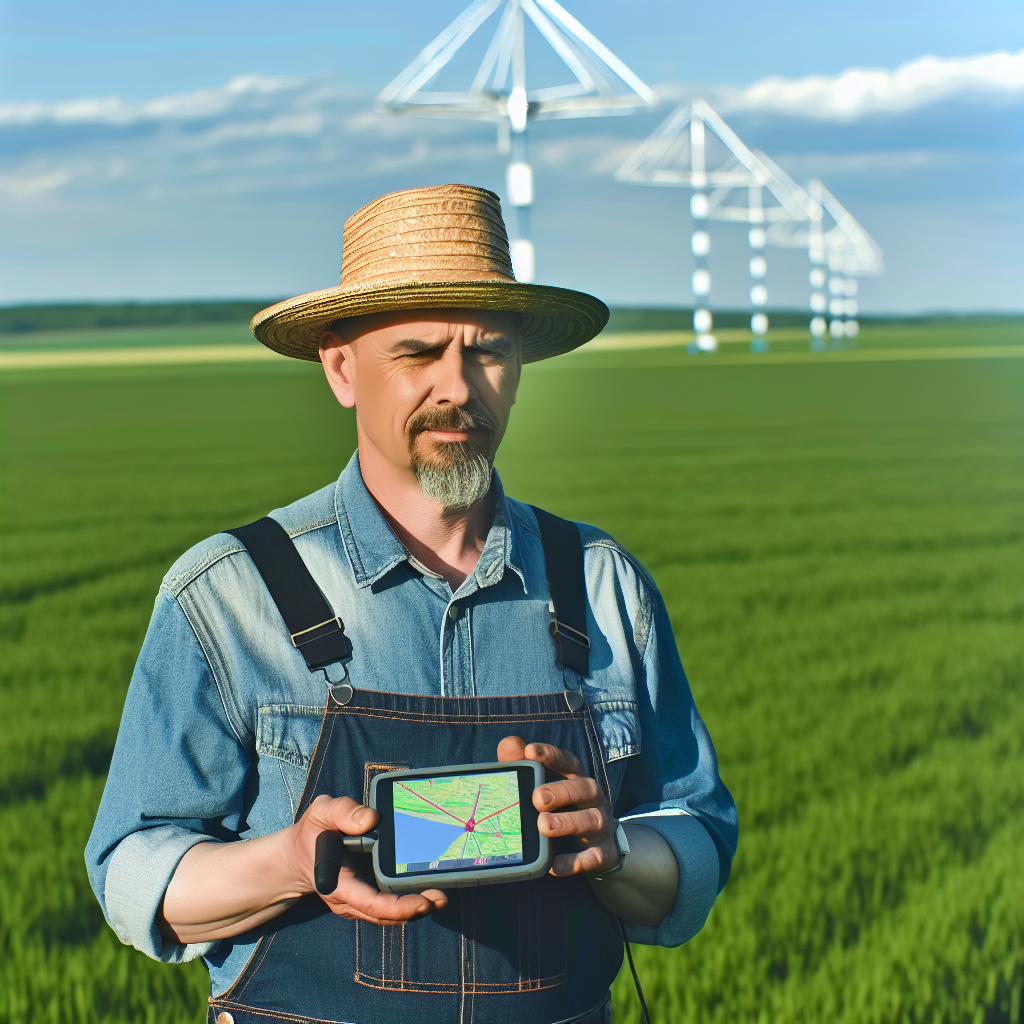
Case Studies of Successful GPS Integration in Farming
Precision Agriculture at Brown Family Farms
Brown Family Farms is redefining modern farming with GPS technology.
The farm integrates GPS-guided equipment for more accurate planting.
Showcase Your Farming Business
Publish your professional farming services profile on our blog for a one-time fee of $200 and reach a dedicated audience of farmers and agribusiness owners.
Publish Your ProfileThis precision reduces seed costs significantly.
Additionally, it minimizes overlaps during field operations.
As a result, Brown Family Farms has seen a notable increase in yields.
Smart Harvesting Solutions by Greenfields Inc.
Greenfields Inc. has adopted GPS technology for harvesting crops efficiently.
They utilize GPS tractors to manage crop harvesting precisely.
This practice leads to timely harvests and reduces crop losses.
Moreover, the use of GPS improves labor management on the farm.
Consequently, Greenfields Inc. has enhanced their operational productivity.
Water Management Innovation by River Valley Co-op
River Valley Co-op employs GPS technology for effective irrigation management.
The farm utilizes GPS data to optimize water usage in crops.
This approach ensures crops receive the right amount of water.
It also lessens water waste, promoting sustainability in farming.
Furthermore, River Valley Co-op has reported lower water costs.
Pest Control Advancements at North Star Farms
North Star Farms uses GPS technology for intelligent pest control.
The farm integrates GIS mapping to identify pest hotspots.
This targeted approach allows for precise pesticide applications.
As a result, North Star Farms preserves beneficial insects and reduces chemical use.
This innovative strategy enhances both crop health and environmental safety.
Comprehensive Data Analysis by Oak Ridge AgriTech
Oak Ridge AgriTech invests in GPS technology for data-driven farming.
The company collects various data points to analyze crop performance.
This analysis guides future farming decisions and practices.
Additionally, it helps farmers understand soil health and nutrient needs.
Ultimately, Oak Ridge AgriTech enhances productivity and sustainability.
You Might Also Like: Advanced Remote Sensing Techniques for Farming
Future Trends in GPS Technology for Agriculture
Advancements in GPS Accuracy
Recent innovations enhance GPS accuracy in farming applications.
Farmers now achieve centimeter-level precision with advanced systems.
This improvement leads to more effective resource management.
Integration with Drone Technology
The integration of GPS technology with drones transforms modern agriculture.
Drones equipped with GPS collect vital data from the field.
This information helps farmers monitor crop health efficiently.
Moreover, it streamlines applications such as irrigation and fertilization.
Use of Artificial Intelligence
Artificial intelligence is becoming crucial in GPS technology.
AI algorithms analyze large datasets collected via GPS systems.
This analysis allows for predictive modeling of crop yields.
Additionally, it assists in pest detection and management strategies.
Improved Mapping Technologies
Mapping technologies have significantly advanced in recent years.
Farmers utilize these technologies for detailed spatial analysis.
High-resolution maps aid in better field planning and crop rotation.
Furthermore, they facilitate precision agriculture applications.
Enhanced Connectivity of IoT Devices
The Internet of Things (IoT) is revolutionizing agricultural practices.
Showcase Your Farming Business
Publish your professional farming services profile on our blog for a one-time fee of $200 and reach a dedicated audience of farmers and agribusiness owners.
Publish Your ProfileConnected devices continuously transmit data to farmers.
These devices rely heavily on GPS technology for operation.
As a result, farmers can make informed decisions in real time.
Sustainability and Environmental Benefits
GPS technology promotes sustainable farming practices globally.
By optimizing resource usage, it reduces waste and environmental impact.
This also aligns with regulatory efforts to promote sustainability.
Farmers benefit both economically and environmentally from these trends.
Recommendations for Farmers
Adopt GPS Technology
Farmers should consider integrating GPS technology into their operations.
This technology offers precise mapping and tracking of fields.
It enhances the efficiency of planting and harvesting processes.
Invest in Training
Investing in training ensures farmers understand the technology better.
Workshops and online courses can help farmers learn effective GPS use.
Knowledgeable staff can maximize the benefits of this technology.
Utilize Data Analytics
Farmers can benefit from analyzing data collected from GPS technology.
Data analytics identifies patterns and improves decision-making.
It allows for more accurate crop planning and resource allocation.
Collaborate with Experts
Collaboration with agronomists can optimize GPS technology application.
Experts can provide tailored solutions for specific farm needs.
Building partnerships fosters long-term sustainability and growth.
Regular Updates and Maintenance
Farmers should maintain their GPS equipment regularly.
Routine checks prevent malfunctions and ensure accuracy.
Staying updated with the latest technologies enhances performance.
Emphasize Environmental Sustainability
Farmers are encouraged to use GPS for sustainable practices.
This technology supports precision farming methods, minimizing waste.
It signals a commitment to responsible agricultural practices.
Additional Resources
Benefits and Evolution of Precision Agriculture : USDA ARS
The Evolution of Precision Agriculture and Policy Implications …

